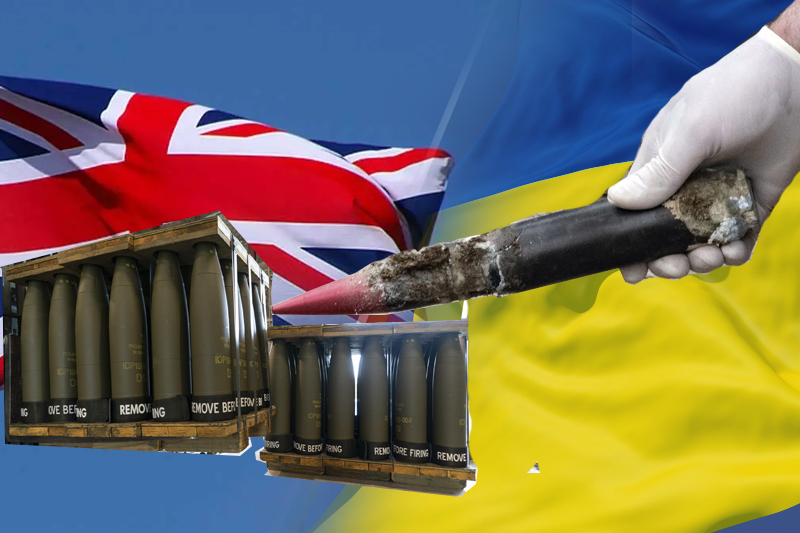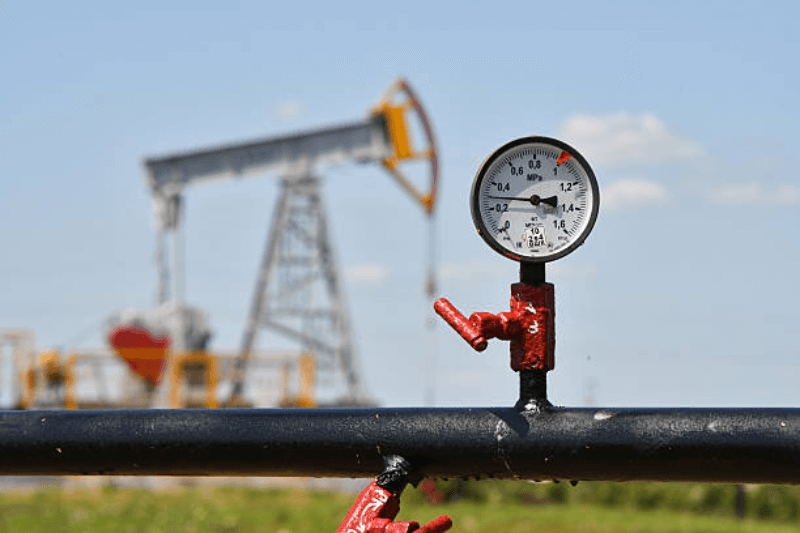
Uranium-Based Ammunition Being Sent By The UK To Ukraine Investigated
After the British government announced it would give Ukraine a type of munition that Moscow falsely claims has nuclear components, Russia threatened to intensify its attacks in Ukraine.
The British defense ministry announced on Monday that it would give Ukraine depleted uranium-tipped armor-piercing rounds.
Such rounds were created by the United States during the Cold War to eliminate Soviet tanks, including the T-72 tanks that Ukraine is currently up against in its attempt to end a standoff in the east.
A byproduct of the uranium enrichment procedure required to make nuclear weapons is depleted uranium. According to Edward Geist, a nuclear expert and policy researcher with RAND, the rounds still have some radioactive characteristics, but they are unable to produce a nuclear reaction like a nuclear weapon could.
The Russians nonetheless issued a stern warning that the rounds were creating the potential for further escalation. They have previously suggested that the war might progress to the use of nuclear weapons.
The White House and the British ministry both rejected the Russian accusations. Even though the ammunition is not a nuclear weapon, there are risks associated with it.
Keep Reading
A look at ammunition made with uranium ore:
DEPLETED URANIUM: WHAT IS IT?
As a byproduct of the process used to produce the rarer, enriched uranium used in nuclear fuel and weapons, depleted uranium is produced. Depleted uranium is more dense than lead, which makes it very attractive as a projectile despite being significantly less potent than enriched uranium and unable to cause a nuclear reaction.
Geist explained that the projectile is “so dense and it’s got so much momentum that it just keeps going through the armor—and it heats it so much that it catches on fire.”
According to Scott Boston, a senior defense analyst at RAND, a depleted uranium munition is essential “an exotic metal dart fired at an extraordinarily high speed.”
The U.S. Army started producing armor-piercing rounds with depleted uranium in the 1970s, and it has since been added to composite tank armor to fortify it. Depleted uranium has also been added to the weapons fired by the Air Force’s A-10 tank-killing close air support attack plane. According to Boston, the American military is still working on depleted uranium weapons, most notably the M829A4 armor-piercing round for the M1A2 Abrams main battle tank.
According to a statement released by the Pentagon on Thursday in response to a question from the Associated Press, “DOD has procured, stored, and used depleted uranium rounds for several decades since these are a long-standing component of some conventional munitions.”
Garn noted that “other countries have long owned depleted uranium rounds as well, including Russia,” and that the rounds have “saved the lives of many service members in combat.”
Garn cited operational security as the reason why he would not comment on whether the M1A1 tanks preparing for Ukraine would have depleted uranium armor upgrades.
WHO SPEAKS FOR RUSSIA?
The collective West is starting to use weapons with a “nuclear component,” according to President Vladimir Putin, who issued a warning on Tuesday. Moscow will “respond accordingly.”
Russian Foreign Minister Sergey Lavrov warned that the munitions are “a step towards accelerating escalation” and claimed that the British “have lost their bearings.” The announcement was “another step, and there aren’t so many of them left,” according to Sergei Shoigu, minister of defense.
Russia’s claims were criticized by the White House as false information.
John Kirby, a spokesman for the US National Security Council, said, “Make no mistake, this is yet another straw man through which the Russians are driving a stake.”
A White House official, who spoke on the record under the condition of anonymity and was not authorized to speak publicly about the situation, said that Russia has depleted uranium weapons as well and simply does not want Ukraine to possess them as well.
According to Air Force Brig. Gen. Pat Ryder, the Pentagon’s press secretary, the United States is not supplying Ukraine with depleted uranium weapons from its own stockpile.
AN RISK, BUT NOT A BOMB
Although depleted uranium munitions are not considered nuclear weapons, the U.N. atomic watchdog has warned of the potential risks of exposure and urged caution when handling them due to their low radiation emissions.
The International Atomic Energy Agency warns that handling such ammunition “should be kept to a minimum and protective apparel (gloves) should be worn,” and that “a public information campaign may, therefore, be required to ensure that people avoid handling the projectiles.”
This should be considered as part of any risk assessment, and the extent and volume of ammunition used in a location should determine what precautions are necessary.
Depleted uranium, according to the IAEA, is primarily a toxic chemical rather than a radiation risk. Aerosol particles can be inhaled or ingested; while most would be excreted once more, some could enter the bloodstream and harm the kidneys.
The IAEA warns that high concentrations in the kidney “can damage and, in severe cases, renal failure.”
According to Geist, the depleted uranium round’s low level of radioactivity “is a bug, not a feature” and if the US military could find another material with the same density but without the radioactivity, it would probably use that instead.
Depleted uranium ammunition was used against Iraq’s T-72 tanks in the 1991 Gulf War and again during the 2003 invasion, as well as in Serbia and Kosovo. Americans who served in those conflicts have questioned whether their use contributed to the ailments they currently experience.
The lower house speaker of the Russian parliament, Vyacheslav Volodin, warned that the availability of depleted uranium ammunition could result in “a tragedy on a global scale that will primarily affect European countries.”
In the former Yugoslavia and Iraq, according to Volodin, the use of such American ammunition caused “radioactive contamination and a sharp increase in oncological diseases.”




